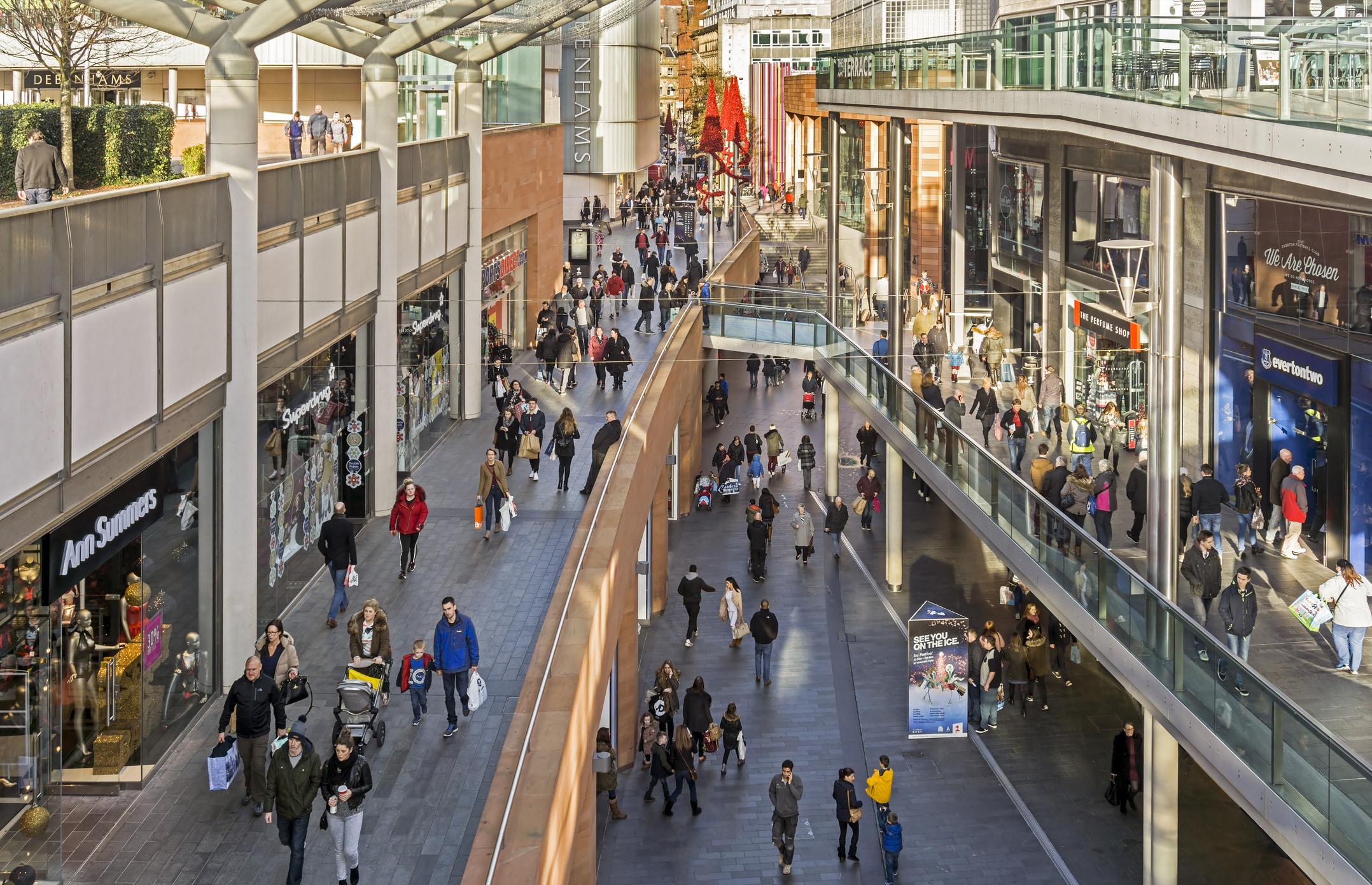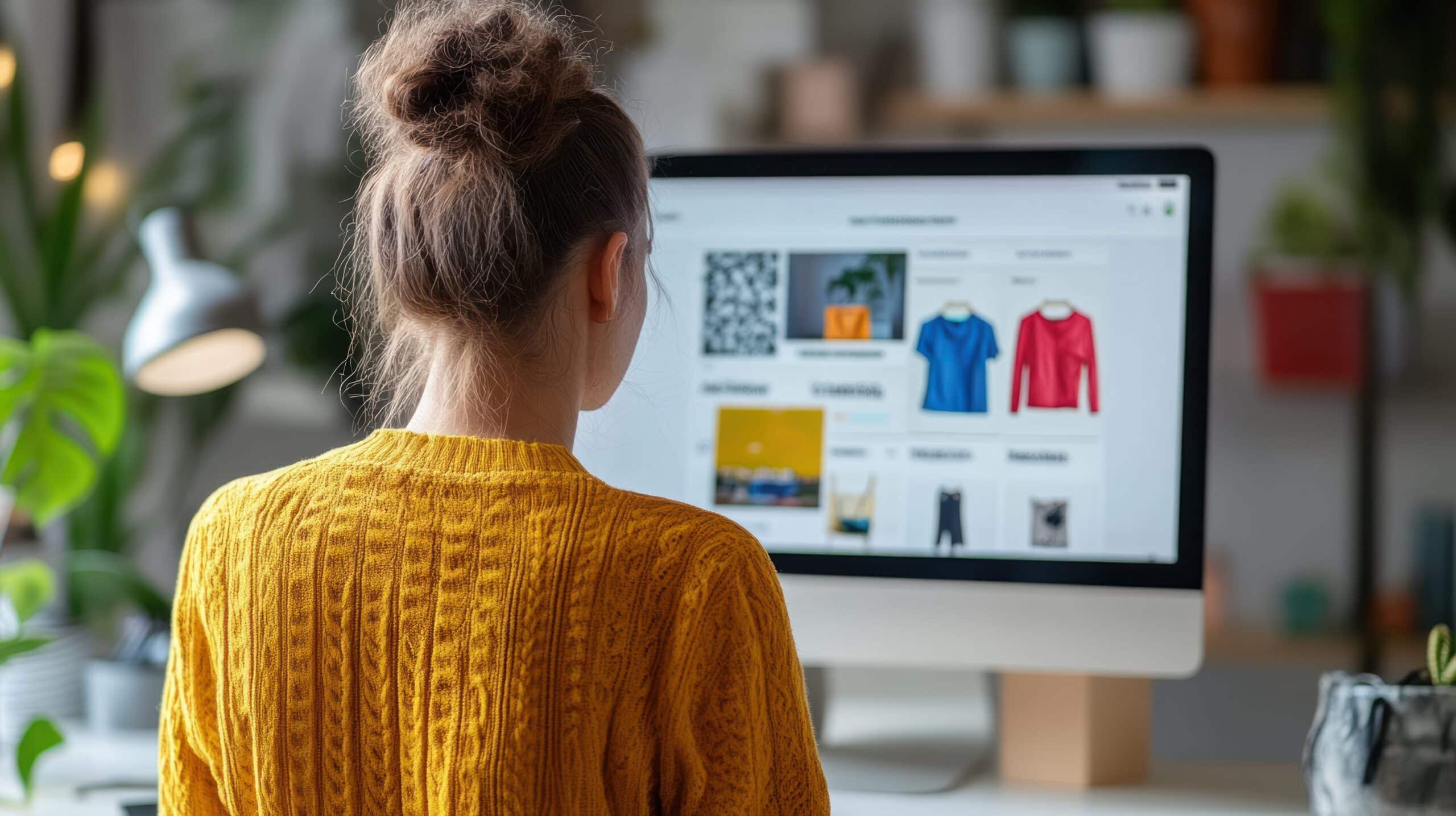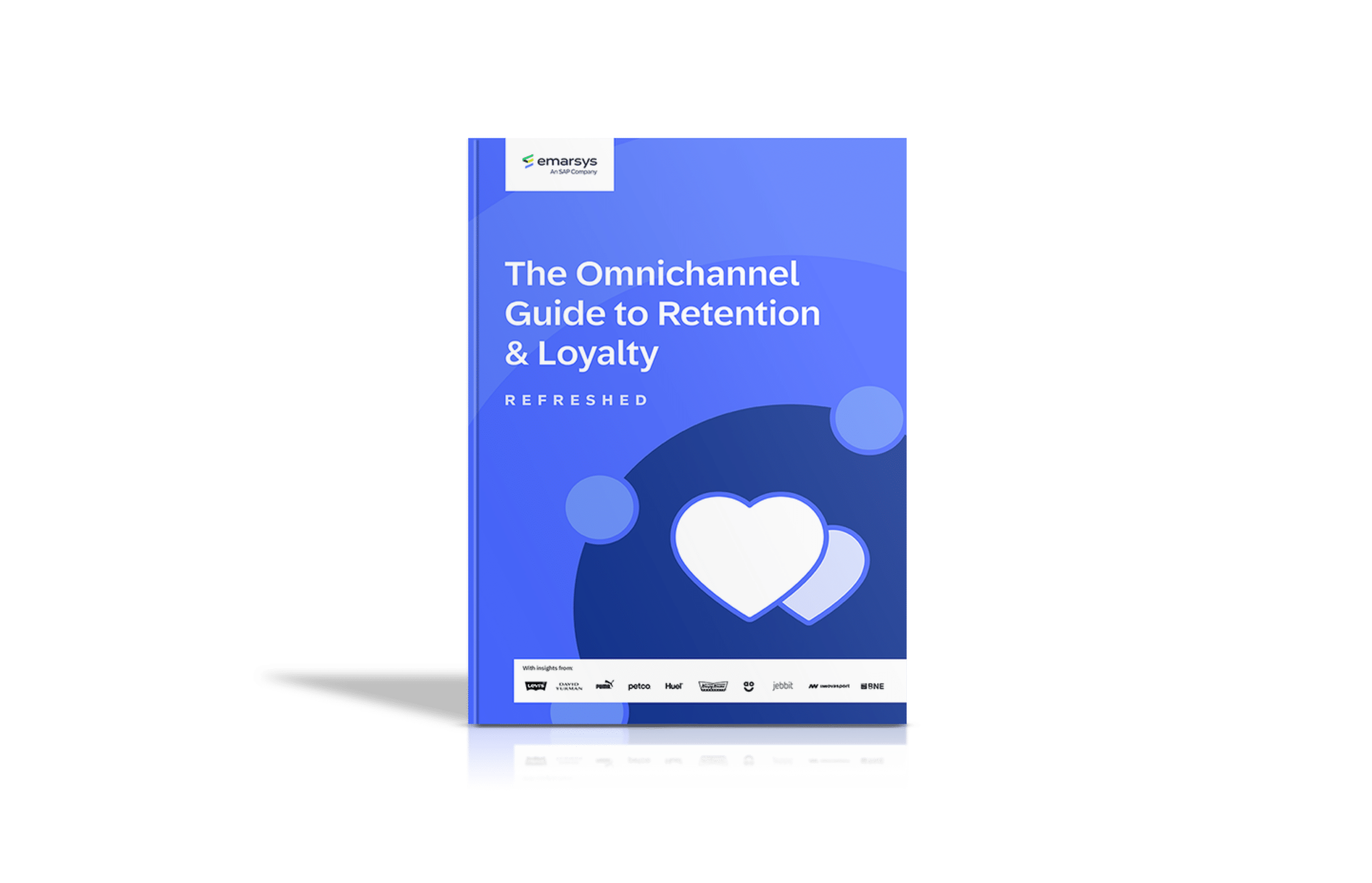Shoppers no longer see a difference between online and offline. They browse products on their phones while standing in store, pick up online orders at the curb, and expect loyalty rewards to follow them across every channel. For retailers, this means every touchpoint is connected, and every experience matters.
To help you understand where customer expectations are heading, we’ve gathered the latest omnichannel retail statistics from SAP Emarsys research and other leading sources. Together, they paint a picture of how fulfillment, loyalty, payments, and channel preferences are evolving and what that means for the future of customer engagement.
Use these insights as a benchmark for your own strategy, and as inspiration to create seamless journeys that build trust and long-term loyalty.
In-Store Mobile is Now Part of the Shopping Journey
Mobile is the glue between digital discovery and physical shopping. Shoppers rely on their mobile devices to research products, unlock rewards, and engage with brands in new, interactive ways. For retailers, this makes mobile a cornerstone of omnichannel strategy.
Consumers with a brand’s app on their phone are 18% more likely to have a brand they love [SAP Emarsys]
Brand apps are powerful digital storefronts and loyalty drivers that build relationships with customers. Having a brand’s app installed increases the likelihood that a consumer will form a lasting bond with that brand. Retailers who create app experiences that are rewarding, intuitive, and connected to the store environment can deepen emotional ties and encourage repeat business.
69% of consumers say they’ll use an app more often if it offers rewards or personalized messages [SAP Emarsys]
Consumers expect more than a static app. Nearly seven in ten say they’ll engage more if apps deliver value in the form of rewards, offers, or personalized recommendations. This means apps need to go behind merely replicating the web experience, instead enhancing the in-store experience with timely, relevant incentives that influence purchase decisions.
77% of shoppers search for items on their phone while in a store [Ryder]
Mobile is now a critical touchpoint during in-store shopping. With more than three-quarters of consumers searching for items on their phones while browsing shelves, retailers can’t afford to treat online and offline channels separately. Customers expect product details, stock availability, and pricing to be consistent no matter where they look. If a product is missing information or priced differently online, it creates friction that could cost the sale. Retailers who invest in mobile-friendly tools like real-time inventory updates and product finders are meeting shoppers where they are and reducing the risk of abandonment.
69% compare prices at nearby stores while shopping in-store [Ryder]
Price transparency has become instant. Nearly seven in ten shoppers pull out their phones in-store to check if competitors nearby offer a better deal. This puts pressure on retailers to stay competitive not just in promotions but also in perceived value, service, and loyalty benefits. For example, offering price-matching policies or bundling services (like free alterations, extended warranties, or faster returns) can help prevent customers from leaving mid-shop. The store is no longer just about stock — it’s about creating a compelling value equation that customers can’t find elsewhere.
61% say they shop in-store because they enjoy the experience [Ryder]
Even in an omnichannel world, physical stores hold unique value. Six in ten shoppers say they prefer in-person shopping simply because they enjoy it — from testing products and comparing options to the overall atmosphere of a store. This reinforces that retail isn’t just transactional; it’s experiential. Brands that design stores as hubs of discovery, supported by digital convenience, can create environments that foster loyalty. Interactive displays, connected fitting rooms, and staff equipped with mobile tools help bridge the digital-physical divide while amplifying the enjoyment customers already associate with shopping in-store.
44% of consumers value immersive shopping experiences like AR/VR, and 37% value marketing through voice assistants [SAP Emarsys]
Emerging technologies are shaping how shoppers engage with products. Whether it’s trying on items virtually or using a voice assistant to discover new products, consumers see these as valuable brand touchpoints. Retailers that experiment with immersive mobile-led experiences can differentiate themselves and capture consumer attention in an increasingly competitive market.

Fulfillment and Pickup are Redefining Convenience
Convenience is no longer just about fast shipping. Customers now expect multiple ways to receive and return their purchases. From curbside pickup to subscriptions and seamless in-store returns, fulfillment is now a major driver of loyalty. The brands that win are those that see fulfillment not as a back-end function, but as part of the customer experience itself.
Curbside pickup was used in 17.5% of online orders in holiday 2024 (peaked at 37.8% on Dec 23) [Adobe]
Curbside has become a critical safety net during the busiest shopping days of the year. In 2024, nearly two in five shoppers chose curbside on December 23rd, proving that it’s no longer just an option for cautious or convenience-focused buyers. For retailers, this highlights the importance of operational readiness, from clear curbside signage to synchronized inventory systems that ensure customers aren’t met with “out of stock” surprises when they arrive. Curbside is as much about trust and efficiency as it is about convenience.
55% prefer to return online purchases in store; 40% often make extra purchases when picking up or returning [Ryder]
More than half of consumers would rather handle returns in-store than ship items back, and nearly half end up buying something else when they’re there. This makes returns a golden opportunity, not just a logistical challenge. Retailers that streamline the return process with dedicated counters, instant refunds, or exchanges can not only recover potential lost revenue but also drive incremental sales. Viewing returns as part of the customer journey, not the end of it, helps turn a pain point into a growth lever.
63% use curbside pickup to avoid package theft; 59% because an item is in stock nearby [Ryder]
Curbside is solving problems beyond speed. For nearly two-thirds of shoppers, it’s about peace of mind, avoiding porch piracy and ensuring they get their item quickly. This shows that fulfillment isn’t just a back-end operation; it’s directly tied to customer trust. Retailers who promote security benefits alongside convenience can better resonate with safety-conscious consumers, turning fulfillment into a brand differentiator.

Payments and Checkout are Going Digital
The checkout process is often where friction determines whether a customer completes or abandons a purchase. As digital wallets and unified commerce gain traction, retailers have new opportunities to create smoother, safer, and more consistent payment experiences across channels.
In-store digital wallet usage in the US rose to 28% in 2024 (from 19% in 2019) [McKinsey]
Digital wallets are becoming mainstream in physical stores. In just five years, usage has increased nearly 50%, showing that customers are eager for fast, tap-to-pay convenience. For retailers, this means investing in contactless infrastructure is no longer optional – customers expect it. Supporting mobile wallets also ties into loyalty integration, allowing customers to stack points, rewards, and payment methods in one seamless transaction.
More than half (51%) say there’s no need to carry a physical wallet now that they have a mobile wallet [SAP Emarsys]
The mobile wallet has shifted from a convenience to a replacement. When more than half of consumers believe they no longer need a physical wallet, retailers must ensure their systems are compatible with all leading wallet providers. Beyond payments, mobile wallets can deliver digital receipts, loyalty cards, and personalized offers, turning checkout into a customer engagement channel rather than the end of the journey.
Nearly half (48%) of consumers have signed up for a loyalty card to save costs, and 36% buy via repeat subscriptions [SAP Emarsys]
Subscriptions and loyalty cards are reshaping fulfillment. More than a third of shoppers now use repeat subscriptions to manage regular purchases, blending convenience with predictable value. This creates new opportunities for retailers to lock in recurring revenue while strengthening customer ties through cross-channel loyalty.
Loyalty and Retention Hinge on Omnichannel Retail Experiences
Loyalty programs are evolving beyond points and discounts. Your customers expect value across every channel, from apps and subscriptions to ethical brand choices. Omnichannel loyalty strategies that combine rewards, personalization, and values-driven engagement are proving most effective at keeping customers committed.
28% of consumers increased their use of loyalty programs in 2024, a 40% jump from 2023 [SAP Emarsys]
Loyalty engagement is accelerating, not slowing down. More than a quarter of consumers boosted their use of loyalty programs last year, showing that when brands deliver value, shoppers are willing to opt in.
Ethical Loyalty grew from 24% to 30% and True Loyalty from 27% to 33% between 2021–2024 [SAP Emarsys]
The loyalty landscape is shifting toward values and experiences. Consumers are increasingly choosing brands they feel align with their beliefs (ethical loyalty) or those they genuinely love (true loyalty). This shows that omnichannel retail loyalty programs must go deeper than discounts: they should weave in sustainability, community engagement, or exclusive experiences that help foster authentic connections.

Channel Preferences and Data Transparency Shape Trust
Consumers don’t just interact with brands through one or two channels anymore. They move between email, apps, websites, and social platforms, expecting a seamless experience. At the same time, their willingness to engage depends on whether they trust how brands handle their data.
Top US consumer channels to interact with brands: Email (38%), Web (31%), Mobile apps (28%) [SAP Emarsys]
Email remains the leading channel for U.S. consumers, but mobile apps and websites are catching up fast. This mix highlights the importance of omnichannel orchestration. In short, customers want to hear from brands on their terms, whether that’s through a marketing email, a push notification, or a direct in-app experience. Retailers that treat channels as complementary rather than siloed can build consistency that makes engagement feel natural.
71% of US consumers are put off when brands ask for data without explaining how it will be used [SAP Emarsys]
Data capture is part of the customer experience. When brands ask for personal information without explaining the benefit, most consumers disengage. Transparency is critical: retailers must be clear about why they’re asking for data and how it enhances personalization. This not only builds trust but also ensures customers actually volunteer the information needed to fuel relevant omnichannel experiences.
Seasonal Shopping Highlights the Power of Omnichannel
The holiday season and key shopping events are stress tests for omnichannel strategies. They reveal how well retailers can scale fulfillment, connect channels, and deliver experiences that keep customers loyal in the most competitive moments of the year.
Cyber Monday 2024 set a new record at $13.3B in sales, up 7.3% year over year [Adobe]
Cyber Monday continues to dominate holiday retail, with billions flowing through both online and omnichannel transactions. For retailers, it’s a reminder that consumers expect consistency across digital and physical touchpoints during peak periods. Inventory, promotions, and loyalty programs must work seamlessly, or the moment is lost.
65% of back-to-school shopping in 2023 happened in physical stores, while online sales grew 7.4% year over year [US Census Bureau]
Two-thirds of parents still preferred in-store shopping for back-to-school, but digital channels showed stronger growth rates. This highlights a hybrid reality: physical stores drive volume, while online provides the flexibility and reach to capture incremental sales.
Curbside pickup peaked at nearly 38% of orders on December 23, 2024 [Adobe]
The last-minute rush has gone omnichannel. Curbside fulfillment spiked the day before Christmas Eve, proving its role as a pressure valve for overwhelmed stores and anxious shoppers. Retailers who invest in scalable curbside operations can convert holiday chaos into customer satisfaction, and potentially lock in repeat business from grateful last-minute buyers.








